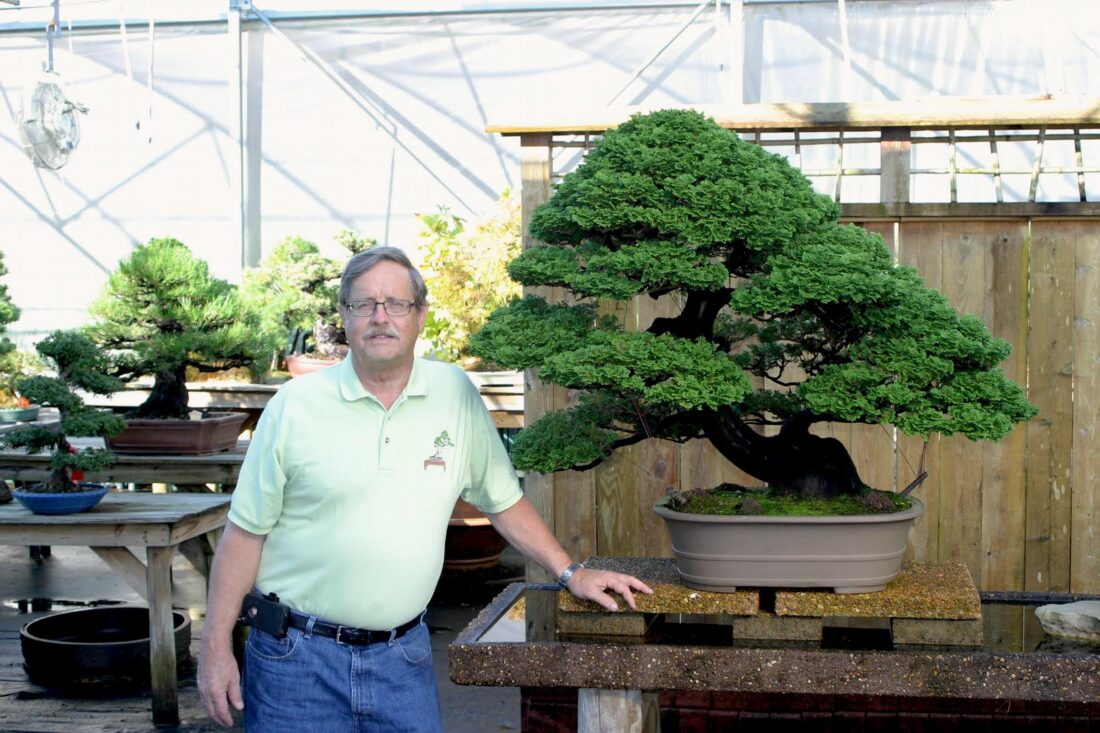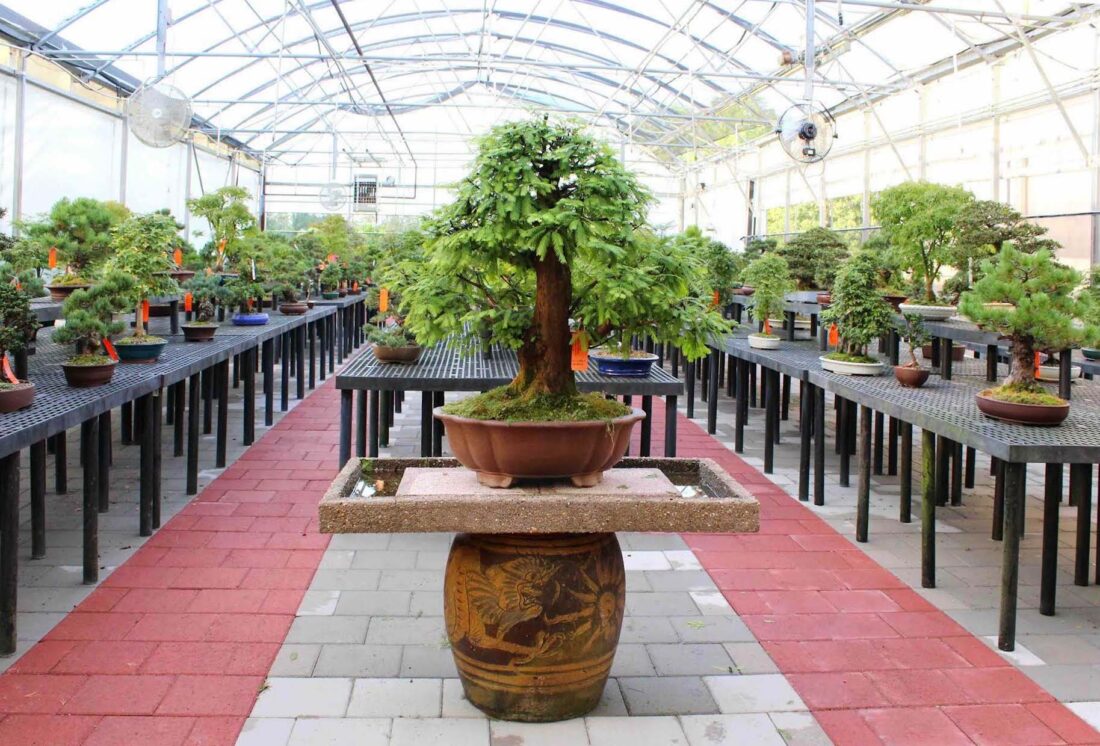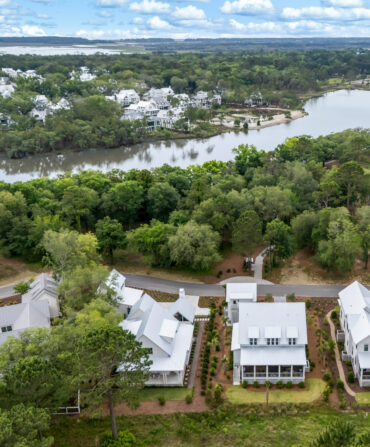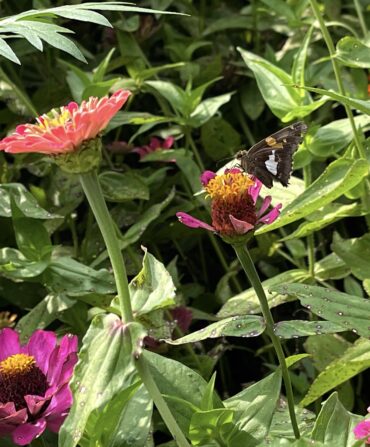Ask Southerners which trees are most associated with their region, and many will give rightful props to bald cypress, loblolly pine, live oak, and magnolia. Perhaps the list should expand to include bonsai, considering one hundred thousand of them are currently growing at Brussel’s Bonsai nursery in northern Mississippi.

To be clear, bonsai isn’t a single species of tree but rather the traditional Japanese art of shaping miniature trees in containers. That art, which might employ trimming, pruning, wiring of trunks and branches, and other techniques, can be applied to many species, even if the uninitiated usually picture a juniper. (Thanks, Karate Kid III.) Indeed, it was bonsai of several species, including juniper, black pine, and cotoneaster, that first captured young Brussel Martin’s imagination when his architect father brought a half dozen back to Memphis from a business trip to California in the 1950s. “I’d never even heard of bonsai,” Martin recalls. “At that time, there was only one little book from Brooklyn Botanic Garden on how to care for them.”

After high school, Martin went to work for his father as a draftsman, but the bonsai bug bit again, and he sought out tutelage from the few Japanese-American bonsai masters of the time. Soon, he was growing his own seedlings in pots, placing ads in hobbyist magazines, and packing bonsai in his parents’ kitchen for shipping. By 1972, Brussel’s Bonsai had outgrown one rented nursery plot and moved to five acres purchased in Olive Branch, a Memphis suburb just south of the state line. (Yes, Brussel’s does offer an olive tree bonsai.) That footprint has expanded several times, and today the business operates from fifty climate-controlled greenhouses totaling nearly two hundred thousand square feet.
Satisfying a myriad of bonsai-enthusiast niches, the sprawling nursery grows or imports dozens of species suited for indoor or outdoor placement, from the familiar camellia to the more exotic Hinoki cypress. Most of the stock is young “starter” bonsai in the thirty-dollar range, pre-trimmed and ready to be trained. But there are also mature bonsai shaped by years (decades, even) of care to achieve “movement” that mimics the look of a trunk that’s wind-blown or even drooping from the side of a cliff. “The most expensive bonsai, which can cost up to thirty thousand dollars, exhibit a combination of age, health, quality, and character,” says Martin, who attends to those prized specimens along with two other trained experts.
Selling via its own website and major online retailers including Amazon and Costco, Brussel’s Bonsai ships one hundred and fifty thousand trees annually, making it by far the country’s largest supplier of bonsai. The hottest seller is an azalea starter, and the biggest rush occurs right before Mother’s Day. “Christmas is good too, but that’s our biggest holiday,” Martin says. “We ship forty thousand trees in a ten-day span in May.”
The South, he adds, is a hospitable climate for bonsai fans—both for the actual climate and for the camaraderie. “Here in Memphis, sometimes outdoor trees don’t even need to be moved into the garage in winter,” he says. “For people just getting into it, all the big Southern cities have good bonsai clubs.”








